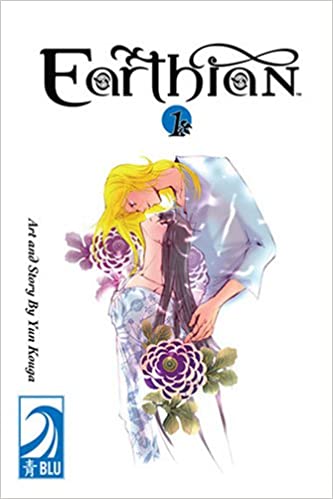By Chase Conner
As a student worker this year, one of my jobs was to help build the manga collection by identifying and recommending a number of new acquisitions. I’m excited to say that many of these included titles with an LGBT focus!
In anticipation of their arrival, I’d like revisit a blog from 2017 about a large donation from Nova Southeastern University that also contained a number of interesting LGBT manga. With over 180 titles, this donation covered a variety of diverse genres and titles spanning the 80’s, 90’s and early 2000’s. Given its LGBT strengths, I decided to take a closer look.
Tokyo Babylon (東京BABYLON):
Among the notable titles in this donation is Tokyo Babylon, a series that ran from 1990 to 1993 and follows the story of Subaru Sumeragi, the 13th head of a sorcerer family known as omnyōji. Published by Shinshokan, Tokyo Babylon was written by the acclaimed all-female manga circle known as CLAMP, who are also known for titles like Cardcaptor Sakura and Tsubasa: Reservoir Chronicle, among others. Their works span a wide variety of themes, including publications in the genre known as BL (Boy’s Love) such as Saint Seiya.
The series Tokyo Babylon begins with a set of self-contained stories about Subaru’s work as an omnyōji solving mysteries relating to the occult. The main drama comes in to play with the introduction of a man named Seishirou who claims to be in love with Subaru. Subaru’s sister, Hokuto, encourages this male-male relationship, but there is more to Seishirou than he lets on. For one, the two may have met once before, and Seishirou’s goals may be in conflict with Subaru’s.
Tokyo Babylon is known for being one of the first mainstream titles to explore homosexual themes, although readers must wait until later in the story to find them. Certain aspects of the plot show their age, such as the ending, which could be said to be a bit tragic for the characters, and the large age difference between the characters of Subaru and Seishirou, which might not sit well with modern audiences. The series X (Ekkisu), a sequel to Tokyo Babylon, is a continuation of some of the plot threads from Tokyo Babylon while focusing on a new set of protagonists. The ultimate fate of the characters of Tokyo Babylon is explored in more detail in this latter series.
Miyuki-chan in Wonderland (不思議の国の美幸ちゃん):
Miyuki-chan is yet another manga heavy with LGBT influence from the artists at CLAMP, focusing in this case on the “L” of LGBT. Plot-wise, there are not too many complicated elements to keep track of. One day, on her way to school, high-schooler Miyuki falls down a rabbit hole after running into a woman skateboarding in a playboy bunny getup. At the bottom of the rabbit hole, she finds herself in Wonderland. However, instead of the usual colorful cast of characters from the iconic “Alice in Wonderland”, Miyuki is surrounded by a number of appealing women. These women are, in turn, attracted to Miyuki and start to pursue her. Labeled a comedic yuri (manga depicting lesbian relationships), this title consists of only one volume with seven chapters, so readers shouldn’t expect any deep plots here. Maybe in this day and age, they might just enjoy it more for the now retro visuals and the overall fantastic nature of it all. OSU’s copy of Miyuki-chan was produced by TokyoPop in 2003 and translated into English by Ray Yoshimoto.
Earthian (アーシアン):
“Earthian” is another BL (or yaoi) manga written by Yun Kouga and published in four volumes by Shinshokan from 1988 to 1994. The angels of Eden have been watching over humanity for thousands of years, and unhappy with the humans’ treatment of earth and their fellow man, they consider wiping them entirely out of existence. To give humanity a chance though, they send teams of angels down to watch humans and keep tallies on their good and bad deeds. The angels that keep track of the good deeds are known as “plus checkers,” and their partners, who watch for bad deeds, are called a “minus checker.” When humanity accrues 10,000 minus checks, then their destruction will be assured.
In Earthian the plot follows the teams of Chihaya, a plus checker, and Kagetsuya, a minus checker. The pair do not take to each other initially due to Kagetsuya’s prejudice against Chihaya’s black hair and wings, which are traits that are associated with fallen angels. Kagetsuya’s feelings change, however, after getting to know his partner, and the two eventually find themselves attracted to one other –despite Eden’s rulings against gay relationships.
* *. *
The donation from Nova Southeastern University contains dozens of fascinating titles, but the three above stood out to me as some of the most notable. When checking out these older manga, readers should be mindful of their publication dates as well as their authors. Some early Boys Love (BL) manga have been critiqued as not offering a very realistic portrayal of gay experiences, especially because many BL authors were actually straight women. Let’s not entirely discount these older titles though, despite their imperfections or problematic elements. It is titles like these, in fact, that may have paved the way for more the diverse and realistic manga that are available today.




